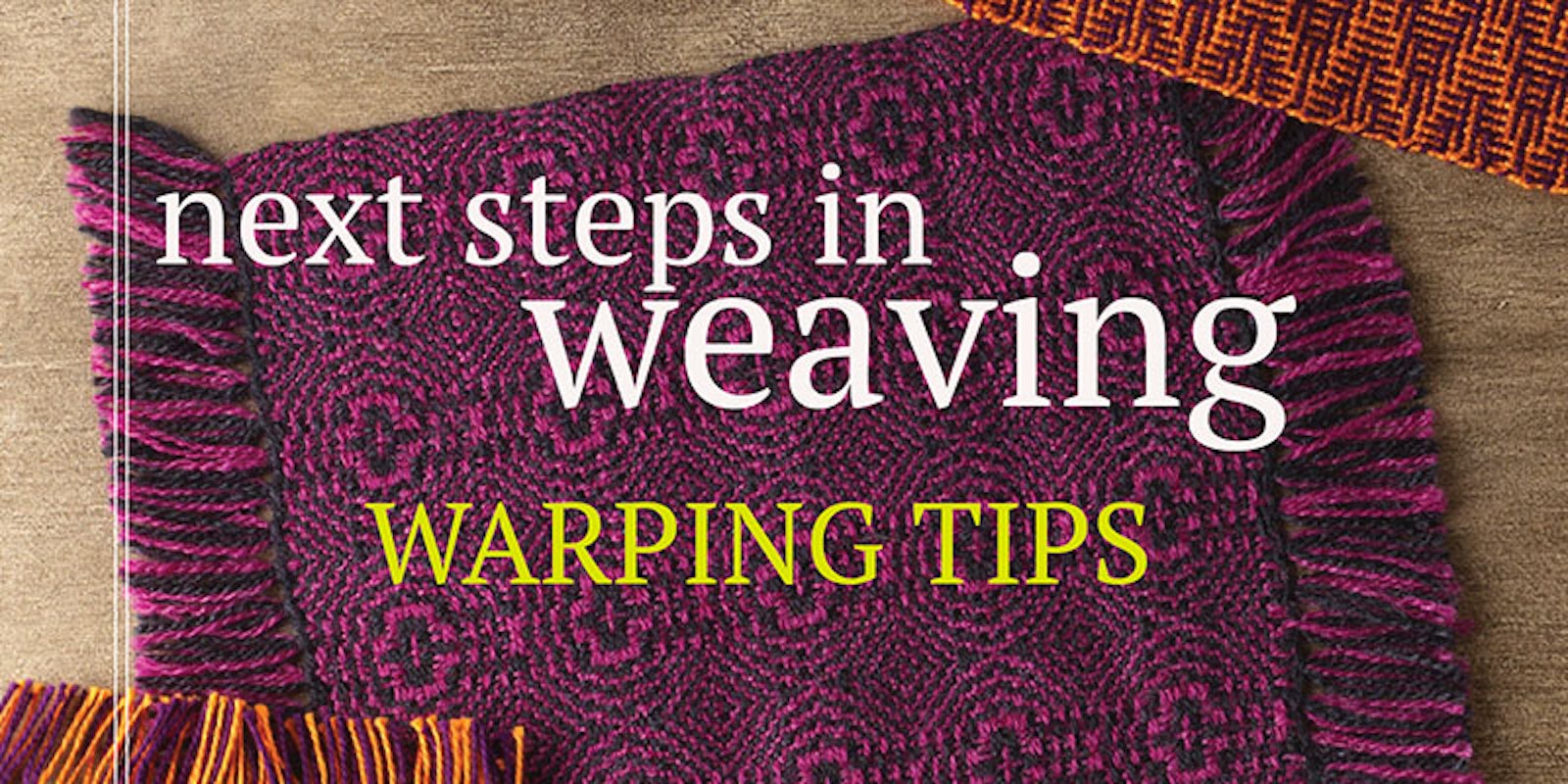Expert weaver Pattie Graver, author of _Next Steps in Weaving: What You Never Knew You Needed to Know, shares her warping tips for more successful weaving projects in this excerpt straight from her best selling book. —Kerry
WARPING TIPS
The success of your weaving is directly related to the care you take during the warping process. Note that these tips are based on my experience using a warping board and warping the loom from front to back.
When you consider an unfamiliar yarn for a warp, give it the tug test to ensure it’s suitably strong. Hold one end of a single strand in each hand and give it a good pull. If the yarn silently drifts apart, it’s unlikely to withstand the tension necessary for weaving. If, on the other hand, you hear a good snap or the yarn breaks cleanly, it should hold up when under tension. To learn what a “good snap” sounds like, try this test on 10/2 pearl cotton (a popular warp yarn). The yarn that I use most often for warp makes an audible snap and breaks during the tug test. Yet this yarn rarely breaks when I’m weaving. Of course, not every yarn that snaps and breaks will be appropriate for warp.
Be diligent about adding a choke tie before you remove your wound warp from the warping board. As its name implies, the choke tie should be very tight to prevent the warp ends from slipping and tangling. I always tie my choke after the first turn on the warping board so that the tie is in line with the cross. (My warping board is hung so the cross is at the top.)
Before you begin sleying or threading, wrap the length of the warp chain around the front beam several times to restrict movement of the individual ends.
When winding the warp onto the back beam, after every two or three rotations, pull on the warp strongly—very strongly—to remove any slack that might cause tension problems as you weave and advance the warp. If the warp is wide, you’ll need to do this in sections. Pull on the warp again before you begin to tie onto the apron rod. Because you are pulling on groups and not single ends, there is little chance that warp threads will break.
When tying onto the front or back rods, tie bundles that are no more than 1" (2.5 cm) wide. In other words, each half of a bundle should be no more than 1/2" (1.3 cm) wide. Doing so helps ensure the straightness and spacing of the ends throughout the warp. A larger bundle will condense more at the points where they are tied.
Be very careful to tie the warp onto the loom with even tension. Tension must be consistent across the entire weaving width. You can tighten the entire warp to the necessary weaving tension via the cranking mechanism on the loom.
—Pattie Graver



